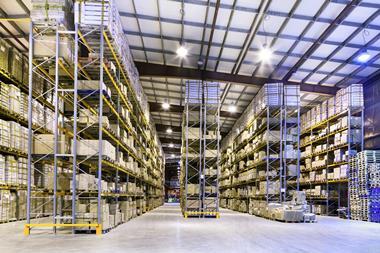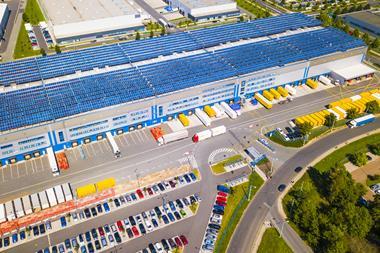The past few years have been tumultuous for the industrial and logistics (I&L) market. Despite 2020 being the worst year for the UK economy in more than three centuries, the I&L market flourished due to a combination of increased reliance on online shopping and demand for personal protective equipment (PPE).

In 2020, take-up of I&L space reached 59.7m sq ft, more than a fifth higher than the previous record set in 2016, according to agent Lambert Smith Hampton (LSH). While this growth was impressive, it couldn’t last forever. Three years on, the industry is regaining balance, and leaders are faced with macroeconomic challenges such as rising inflation, supply chain issues and increasing pressures to decarbonise.
As the industry continues to recalibrate following record performance during the pandemic, there is an increased focus on quality of investment, rather than quantity. Environmental, social and governance (ESG) credentials such as energy efficiency and carbon output are now a priority, which is reflected in the fact that LSH’s data shows a record 45% of 2022’s take-up consisted of new spec or refurbished units.
With lower deal volumes and a greater focus on quality and sustainability, how can investors ensure they are making the most strategic, advantageous decisions? Commercial real estate teams and investors need access to up-to-date, comprehensive and accurate market data to quickly identify and act on the best investment opportunities. Word of mouth or guesswork is no longer enough to come out on top in a more competitive market.
Word of mouth or guesswork is no longer enough to come out on top in a more competitive market
Gathering and analysing data on the wider market and assets under management is the first step. But many teams still rely on outdated Excel spreadsheets, which is a limited approach both in functionality and accuracy. There are plenty of well-established technology platforms or software products that offer in-depth data and analysis to close more deals and drive better returns.
With the recent tightening of Energy Performance Certificate (EPC) regulations, and further legislation proposed for 2027 and 2030, comprehensive data on EPC ratings is key. According to our own data, by 2030, 72% of UK commercial assets will require upgrades, and 95% of UK commercial landlords will need to improve EPC ratings in their portfolios to avoid penalties, and a staggering £13.95bn needs to be invested to make the necessary updates. This further emphasises the need for software that offers detailed insights into the ESG credentials of the market and portfolios.
It is also essential that the I&L market is poised to navigate unexpected risks and opportunities. In a recent EY survey, only 2% of supply-chain executives said their companies were prepared for the pandemic, and 72% reported adverse effects of it.
Businesses need to prioritise investing in technology that gives them a full view of the market and their assets under management. Being armed with this data means that opportunities and risks can be easily identified and acted upon.
Oli Farago is chief executive of Coyote





























No comments yet